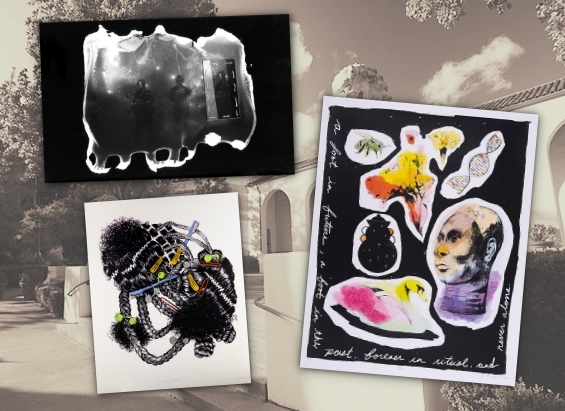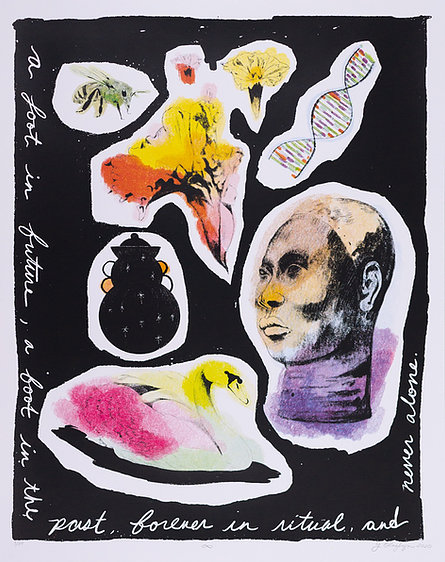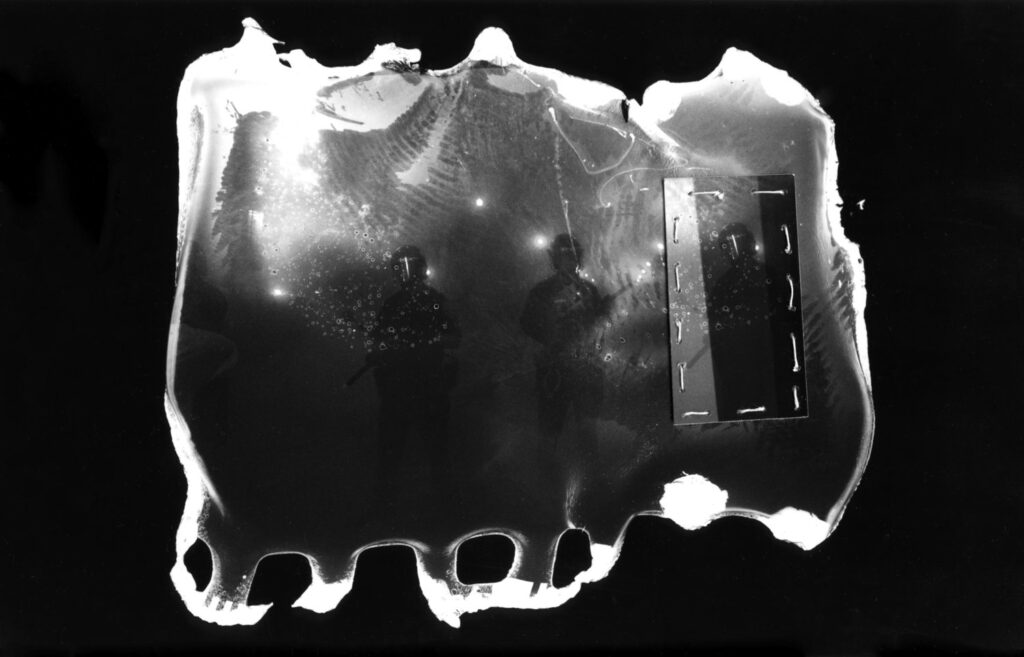
On Wednesday, Jan. 27, the Mills College Art Museum (MCAM) hosted a virtual talk by Bay Area artists Adrianna Adams, Yétundé Olagbaju and Daniel Valencia. Adams, Olagbaju and Valencia have each had one of their printworks recently acquired by MCAM; the three artists spoke in conversation with Yoni Asega and Drew Grasso, co-runners of the West Oakland-based print studio Sun Night Editions, which the artists worked with to produce their prints.
Asega said that when Sun Night Editions began in 2019, he and Grasso intended the business for their own use as a personal studio; however, they soon “decided to use [their] powers for good and open it up to artists in [their] community and help benefit them and their careers.”
Grasso interjected, saying that the studio is still coming together. “We’re still working on it all the time and we’re kind of letting the artists pull us in different directions,” he explained.
Asega concurred and continued by saying, “I think one of our biggest focuses was creating a space that we could have artists come and work in, and kind of experiment in a print medium in. There’s not that many opportunities out in the Bay Area and even in the United States for artists to kind of experiment with printmaking; it’s a medium that requires such expensive tools and machines and all these other contraptions to complete a process, so we’re glad to be able to house everything and allow artists to come in once a month. We have one or two artists a month in to collaborate on pieces.”
Grasso added, “I think as print becomes less of an industrialized process, the print studio becomes — it’s more and more rarified, it’s harder to find as it gets — not relegated to fine art, but, it’s more of a treat to get people in here. And it’s not something you find outside of an institution so much, so if we can kind of take a little bit of that institutional gravitas and give it to people who wouldn’t necessarily have it in their day-to-day lives — I think that has been the most rewarding part of this I think so far. So it was a gigantic honor to have some of those prints acquired.”

Olagbaju, a 2020 alum of the Mills MFA in Studio Art, was the first to field questions about their artistic process.
Gesturing at a projection of their print, titled “∞,” Olagbaju explained, “My process specifically in that print was to rely on this idea of past, present [and] future being collapsed on itself. I was thinking a lot of my own indigeneity as a Yoruba person, thinking about the traditional crafts, which is the bronzes and the pottery, and thinking about how that is sort of folded into my DNA, how I can start engaging with my own ancestry and how I exist now is also an amalgamation of my Yoruba culture … but also, being born here and feeling like I have a foot in this place, in America, and also other places, and places that transcend actual earthly geography. A phrase that I think a lot about is what is on the print, which is ‘A foot in the future, a foot in the past, forever in ritual and never alone.’ And I’m thinking about how all of us hold within us so many different migration stories, so many different ways of being and engaging with our ancestry. This was my first attempt. It’s very quintessential stuff that I like to draw, iconography that I like to explore.”

Next to speak was Valencia, whose print in the MCAM exhibition originated as part of a photo series called “Como Los Gigantes Que Seguimos,” which translates to “Like the Giants That We Follow” in English. Grasso solicited Valencia’s work partly because of the desire to see how a photographer would approach the printmaking process.
When asked to discuss the print, Valencia said, “That whole series has a lot to do with me processing growing up in a neighborhood that wasn’t, I guess, the most funded in the Bay Area, and translating that into a visual that other people could understand. Where like, you have policing, redlining, you have folks just — not deciding the best choices, and me just going through that as a youngster and processing my experiences as an adult and using photography as a means to do that … The whole body of work was shot in 2014, during the World Series, the Giants World Series. And it was — I believe — the first moment in time where I kind of felt a large group of people feeling as free as they could in that moment in time, regardless of what the law enforcement was trying to do at that time to try and simmer that down. And [the print] was just my emotions of going through growing up in the situation that I was in, and then seeing that, and just — trying to translate those two feelings together.”

Last to speak was Adams, the only artist of the three who is a printmaker by trade, though her work with Sun Night Editions marked the first time another party printed her work. Asega and Grasso first met her in 2014 through the San Francisco Art Institute, where Adams received her BFA.
Explaining her choice of print design, Adams said, “Throughout college […] I’ve had an interest in hair as the extension of the self. When I was younger I kind of had a fear of hair, like when it was off your head, like strands … It’s like, it’s dead, it’s on your head, it’s an extension of yourself, but it carries this really heavy weight in terms of cultural identity and individual and communal processes and relationships that are formed around it. And I guess I just wanted to explore a bit of it, and remember the nostalgic 90’s hairstyles and barrettes that I would be styled with by sisters and my mom. … I think also, I was looking at it or thinking about it in terms of the weekly routine of style and self-expression that goes into hair care; but it’s also just an extension of self-care, self-love.”
These artists’ works were selected for acquisition in fall 2020 by students from Mills’ Museum Studies Workshop class, ARTH 134, taught by MCAM director Stephanie Hanor. They were chosen as part of a new “student acquisition project to identify, research, and justify specific artworks that help diversify MCAM’s permanent collection,” according to the museum’s website. The three pieces comprise part of a larger digital exhibition, “Shifting Perspectives,” which includes many works previously owned by and displayed in the museum, though all pieces included are by contemporary artists whose work critiques “traditional visual representations of race, culture, and gender.”
“Shifting Perspectives” also features original artistic scholarship by Mills students and exhibition co-curators Simone Gage, Sage Gaspar, Sydney Pearce, Melika Sebihi and Taya Wyatt. The exhibition is scheduled to run until March 7, 2021.
